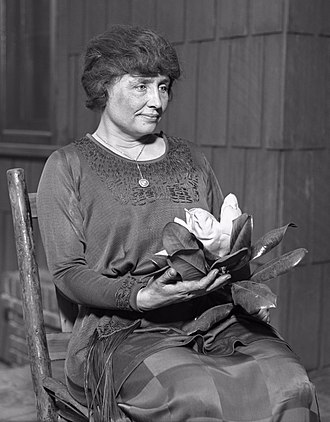9th Class Amazing Notes of Three Days To See

Lesson No: 12
THREE DAYS TO SEE
Summary
Helen Keller was a remarkable woman. Who became deaf and blind at 19 months. She found a guiding light in Anne Sullivan, her teacher. Anne took charge of her when she was seven. In the first paragraph, the author expresses that living each day as if it were our last. The day that could bring out the true value of life. Despite her challenges, Helen Keller, reveals her deep appreciation for nature. She finds beauty in the rising sun. She considers the pageant of seasons an unending drama. The author reflects on her imagination, emphasizing that despite her blindness and deafness. Anne, her ability to perceive the world surpasses that of many sighted individuals. This lesson portrays Helen Keller as not only an admirer of nature but also a person with a profound understanding of life and its beauty.

Question and Answers
Q: Who was Helen Keller?
A: Helen Keller was a woman who became deaf and blind at 19 months, when she was seven years old Anne Sullivan, took charge of her. She was a twenty-year-old graduate of the Perkins School for the Blind.
Q: Describe the thought expressed by the author in the first paragraph.
A: The author thought that it would be an excellent rule to live each day as if we should die tomorrow. Such an attitude would emphasize the values of life.
Q: What makes you feel that the author is sad and depressed?
A: The author is sad and depressed that the people with sight can see so little. She is blind, even so she can see better than people with sight.
Q: How do you get the impression that Hellen Keller was a great admirer of Nature?
A: She was a great admirer of nature. We get this impression when she admires the rising sun and the pageant of seasons and trees.
Q: People who are deprived of sight not devoid of imagination. Discuss referring to the text.
A: The author of this lesson is not only blind but also deaf but she has a better imagination than the people who can see. Her views on nature and people have proved it.
Q: “To me, the pageant of seasons is an unending drama”, Comment.
A: This sentence tells that the change in the seasons is endless. This is the law of nature.
Sentences and Their Types
Sentences can be categorized into four main types based on their functions and structures. Here’s an explanation of each type:
- Declarative Sentences:
- Function: Declarative sentences make statements or express opinions. They convey information or declare something.
- Example: “The sun sets in the west.”
- Interrogative Sentences:
- Function: Interrogative sentences ask questions. They seek information or clarification.
- Example: “Did you finish your homework?”
- Imperative Sentences:
- Function: Imperative sentences give commands, instructions, or make requests. They express a desire for someone to do something.
- Example: “Please close the door behind you.”
- Exclamatory Sentences:
- Function: Exclamatory sentences express strong emotions or feelings. They convey excitement, surprise, joy, or any intense emotion.
- Example: “What a beautiful sunset!”
These sentence types can also be classified based on their structures:
- Simple Sentences:
- A simple sentence contains one independent clause and expresses a complete thought.
- Example: “She walked to the store.”
- Compound Sentences:
- A compound sentence consists of two or more independent clauses joined by a coordinating conjunction (and, but, or) or a semicolon.
- Example: “I like tea, but my brother prefers coffee.”
- Complex Sentences:
- A complex sentence has one independent clause and at least one dependent clause. The clauses are joined by subordinating conjunctions (because, although, when).
- Example: “Although it was raining, they decided to go for a walk.”
Understanding the different types of sentences is essential for effective communication and varied writing styles.
Internal Links:
- Keller, Helen (November 3, 1912). “How I Became a Socialist”. The New York Call. Helen Keller Reference Archive. Archived from the original on March 29, 2016. Retrieved March 15, 2016.
- “Helen Keller”. Architect of the Capitol. Archived from the original on December 2, 2010. Retrieved December 25, 2009.
- “The life of Helen Keller”. Archived from the original on June 7, 2007.
- Eicher, John; Eicher, David (June 1, 2002). Civil War High Commands. Stanford University Press. ISBN 978-0-8047-8035-3.
External links
- Works by Helen Keller at Faded Page (Canada)
- Works by Helen Keller at LibriVox (public domain audiobooks)

- Works by Helen Keller in eBook form at Standard Ebooks
- Works by Helen Keller at Open Library
- Works by Helen Keller at Project Gutenberg
- Works by or about Helen Keller at Internet Archive
- Newspaper clippings about Helen Keller in the 20th Century Press Archives of the ZBW
- Helen Keller and Anne Sullivan Collections at Perkins School for the Blind

Post Comment